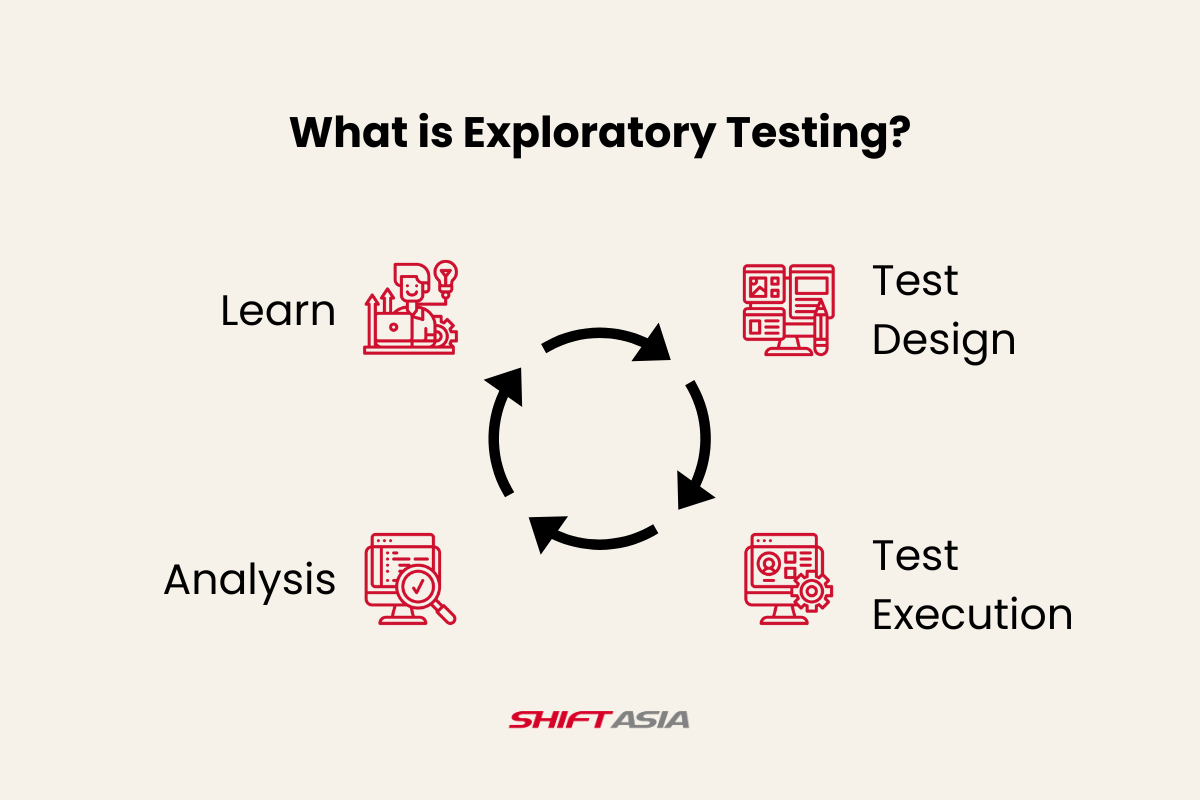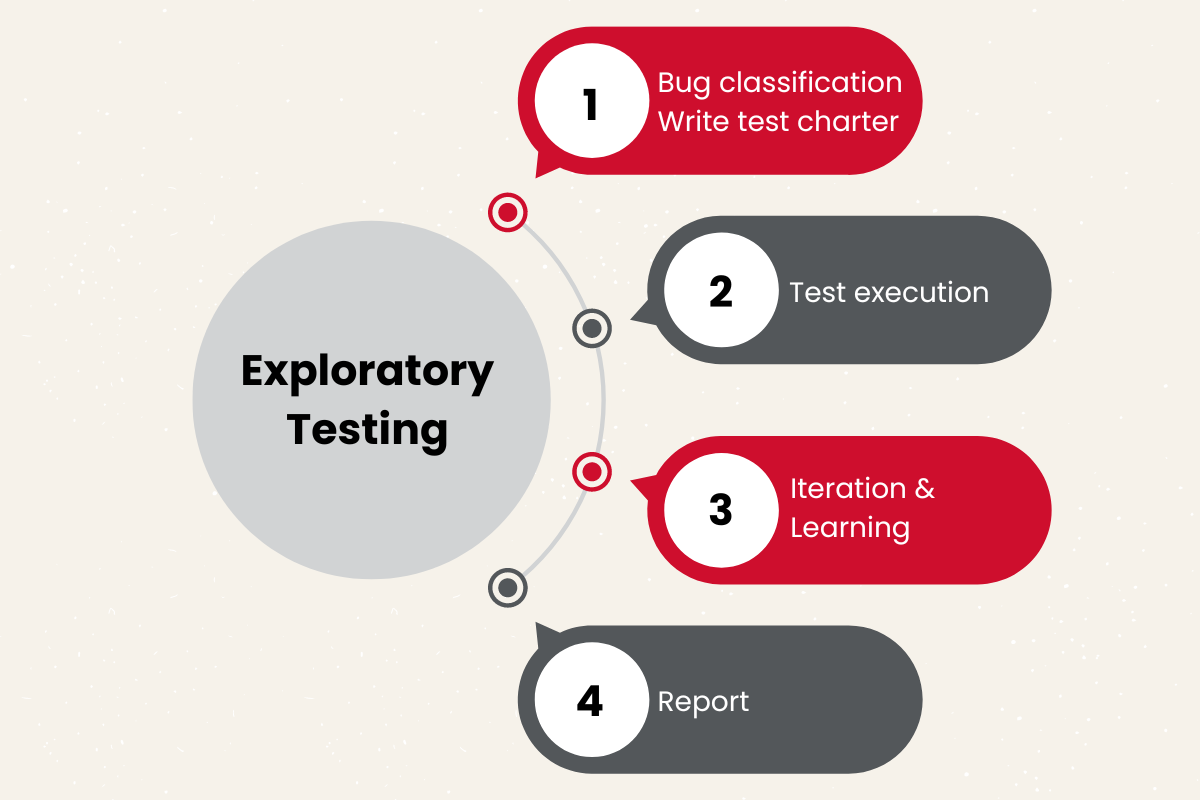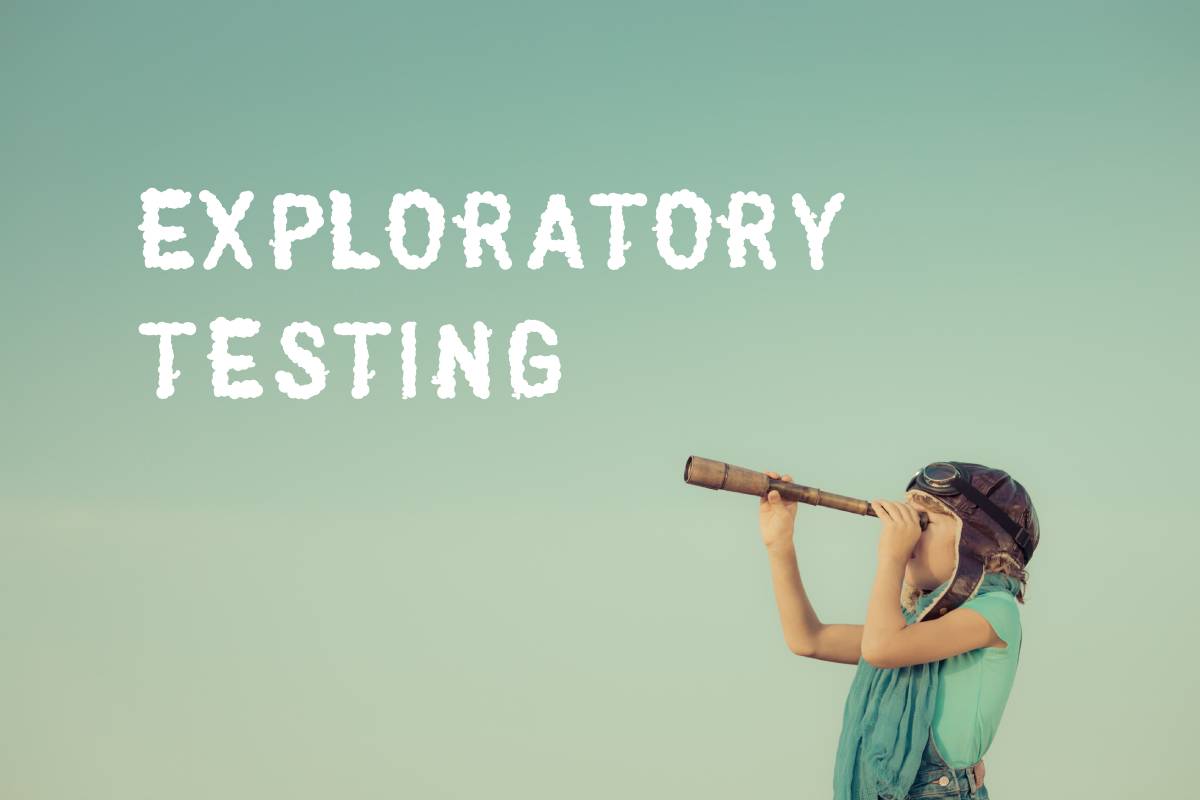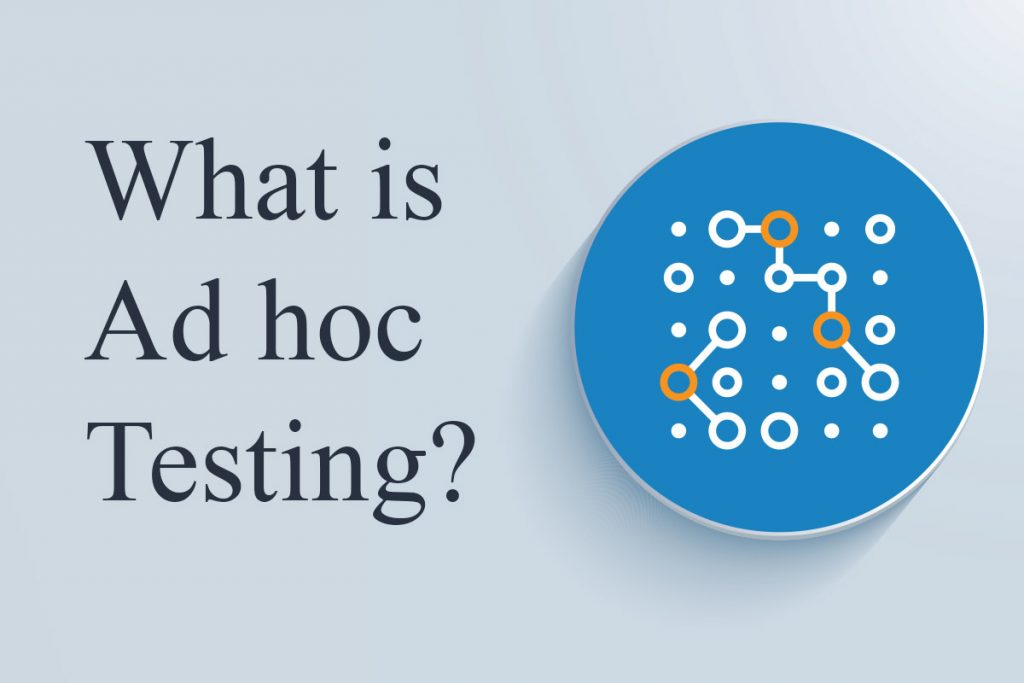Exploratory testing is a modern software testing methodology that emphasizes a dynamic and intuitive approach to quality assurance. Unlike scripted testing methods that rely on predefined test cases, exploratory testing allows testers to design and execute tests based on their intuition, experience, and real-time observations of the software being tested. This approach enables the discovery of unexpected behaviors, edge cases, and potential defects that may go unnoticed in traditional testing methods.
This blog will explore exploratory testing’s principles, benefits, challenges, and best practices.
What is Exploratory Testing?
According to the International Software Testing Qualifications Board (ISTQB), exploratory testing is an approach in which testers dynamically design and execute tests based on their knowledge, exploration of test items, and previous test results.
In other words, exploratory testing is unscripted manual testing that involves testers utilizing their experience and knowledge to simultaneously understand and explore the software under test, plan tests, and design and execute tests. The method was formally introduced by Cem Kaner, an expert in software testing, in his book “Testing Computer Software.”
While this testing approach has similar features to ad hoc testing, exploratory testing is characterized by not designing test cases beforehand but adjusting test goals and content dynamically throughout the testing process based on test execution and results. It focuses on observing the system’s behavior under test and improving test content based on feedback, making it an “interactive” approach.

Types of Exploratory Testing
There are three main types of exploratory testing:
1. Freestyle Exploratory Testing: As the name suggests, this type of testing has no rules or guidelines and does not consider coverage. However, it is useful when you need to quickly become familiar with an application, verify the work of other testers, investigate a defect, or perform a quick smoke test.
2. Scenario-based Exploratory testing: This type focuses on realistic user scenarios. Testers consider how users interact with the system and design exploratory sessions that mimic those interactions. They explore different paths within a scenario, testing for unexpected behavior or breakdowns in the user flow.
3. Strategy-based Exploratory testing: This method involves a more structured approach. Testers utilize various testing techniques, such as equivalence partitioning, boundary value analysis, or risk-based testing, to guide their exploration. They leverage these strategies to identify areas more likely to contain defects and then conduct exploratory sessions within those targeted areas.
4. Charter-based Exploratory testing: In charter-based exploratory testing, the rough purpose and target of the test, the resources to be used, the test perspective, etc., are set in advance as a test charter. If there is a function with quality concerns or a point of view that seems to have been overlooked, etc., by conducting exploratory testing based on rough principles, you can improve quality in a way that aligns more with your objectives.
Why use exploratory testing?
Nowadays, the time-to-market for software products has been shorter and faster; this is due to the accelerated technology driven by market demands. To catch up, both the development and testing processes are required to operate much faster and better.
While script-based testing, which relies on pre-defined test cases, is crucial, it has its limitations. Some defects may evade detection, potentially leading to critical failures. In this context, the unstructured and often random nature of exploratory testing has proven to be invaluable in uncovering these elusive defects that might otherwise go unnoticed.
Exploratory testing, with its unique characteristics, doesn’t require prior test design or specific specifications. This flexibility, coupled with its minimal preparation requirements, allows for swift execution, making it particularly compatible with agile development and CI/CD, where speed and adaptability are key.
Additionally, exploratory testing allows for immediate feedback to the development team regarding discovered defects and insights gained during the testing process. This rapid feedback loop contributes to better quality improvements. Furthermore, the defects identified and insights obtained through exploratory testing play a crucial role in enhancing existing test cases, instilling confidence in the team about the continuous improvement of the testing process, and resulting in a more comprehensive test suite.
Differences between Exploratory Testing and Scripted Testing
Traditional scripted testing is a method of testing in which tests are designed based on documents like specifications and conducted according to predetermined test cases. While scripted testing allows for comprehensive testing, it may be time-consuming and inflexible. The scripted testing approach has the advantage of being able to conduct highly comprehensive tests against specifications, and since testing proceeds based on test cases, it is not influenced by individual skills and eliminates individuality.
On the other hand, scripted testing requires test cases to be prepared in advance, which requires time and cost. In addition, in scripted testing, tests are mechanically executed according to test cases, so it is necessary to perform tests that are less likely to find bugs. Therefore, the disadvantage is that it is difficult to reflect what the tester has learned during the test in the test content.
Exploratory testing, in constract, doesn’t require pre-designed test cases. Testers rely on their experience and learning to conduct tests, adjusting the test content flexibly based on results. Therefore, exploratory testing and scripted testing complement each other.
Benefits and Drawbacks of Exploratory Testing
Exploratory testing has its own set of advantages and disadvantages.
Advantages:
- Speed: Unlike scripted testing, exploratory testing doesn’t require preparing test cases in advance, saving time on test design, review, and modification processes. It allows for swift execution, which is particularly beneficial in agile development.
- Cost-Effectiveness: With minimal documentation and preparation, exploratory testing can effectively focus on testing areas, potentially reducing costs.
- Detection of Hard-to-Find Bugs: Exploratory testing can uncover bugs that may be challenging to detect with scripted testing by designing new test cases based on execution results and system behavior.
- Flexible response to changing requirements: The flexible and rapid nature of exploratory testing makes it suitable for testing in agile development, where requirements frequently change during development.
- Improve Usability: Testers often adopt a user’s perspective when conducting exploratory tests. By doing so, they can evaluate the product’s quality from a user’s standpoint, contributing to improvements in the user interface (UI) and user experience (UX).
- Enhance Existing Test Cases: Defects discovered through exploratory testing and insights gained from these tests can be used to improve existing test cases.
Designing new test cases or modifying existing ones based on the information obtained from exploratory testing can strengthen the test suite. - Feasible Without Documentation: Exploratory testing can be conducted even when specifications or design documents are lacking or insufficient, making it suitable for agile development where documentation may be incomplete.
- Avoidance of the Pesticide Paradox: Exploratory testing avoids the issue of repeating the same tests and potentially missing new bugs, as it allows testers to adapt and find new issues continuously.
Disadvantages:
- Subjectivity: As exploratory testing relies heavily on individual tester skills and experience, the quality of its output can vary. It requires testers with deep knowledge and expertise.
- Limited Coverage Assurance: Due to its flexible nature, it’s challenging to determine the coverage provided by exploratory testing. This means it may not assure comprehensive testing on its own.
- Difficult Management and Control: Exploratory testing lacks strict planning and design, making it challenging for managers to control its quantity, quality, and scope.
- Inability to Prevent Defects Before Testing: Unlike scripted testing, exploratory testing doesn’t allow for identifying defects in specifications or designs before testing begins.
- Not Suitable for Verifying Compliance with Defined Criteria: Exploratory testing is not suitable for verifying compliance with specific criteria such as regulatory requirements, legal standards, performance benchmarks, compatibility, etc. Scripted tests are more appropriate for these types of tests.
When to use Exploratory Testing?
Exploratory testing is a versatile approach that can be executed throughout the software development life cycle (SDLC). It is a natural fit for Agile development methodologies, as it promotes adaptability, collaboration, continuous feedback, and customer-centricity. By incorporating exploratory testing into their Agile practices, teams can enhance their software products’ quality, usability, and reliability while maintaining agility and responsiveness to change.
Exploratory testing is highly recommended for early-stage development projects since it allows testers to delve into the developing features, identify potential issues, and provide early feedback. The knowledge gained from it can be valuable for formal testing later on. Moreover, exploratory testing can uncover issues that might not be identified through scripted testing and can help improve and extend automated testing efforts.
How to execute Exploratory Testing

Executing exploratory testing involves several key stages that are essential for effective testing:
Learn about products and past test results: Before conducting exploratory testing, testers should learn something about what they are testing. By knowing the main specifications of the test target, expected users, basic usage and operation methods, important defects detected in past tests, quality level, etc., testers can conduct exploratory tests more effectively.
Classification and Test Charter: Begin by setting the stage for testing success. Establish clear entry criteria, such as feature completion level or bug classification, to ensure that testing is conducted under appropriate conditions. Additionally, create a test charter outlining the overall goals and areas of focus for the testing session. This document serves as a roadmap, guiding testers through the exploration process. Although it is not always clearly defined, exploratory testing may not create a test charter. As mentioned above, exploratory testing performed by creating a test charter is sometimes called charter-based exploratory testing.
Test Execution: The heart of exploratory testing lies in active engagement with the software. Testers interact with the application, employing critical thinking and creativity to explore its functionalities thoroughly. They experiment with different inputs, scenarios, and use cases, aiming to uncover defects and validate the software’s behavior. Throughout this phase, testers meticulously document their findings, including bugs, observations, and insights gleaned from the testing process.
Iteration and Learning: Testing is an iterative process that thrives on continuous learning and adaptation. As testers delve deeper into the application, they gain valuable insights and understanding. They may adapt their testing approach, revisit certain areas, or explore new testing paths based on their discoveries. This iterative cycle of exploration and learning enhances the effectiveness and thoroughness of the testing process.
Reporting: Finally, testers evaluate the test results to assess the overall effectiveness of the testing effort by comparing their findings against predefined testing metrics to gauge the quality and robustness of the software. This provides valuable insights into the system’s defects, strengths, and weaknesses. Testers then compile their findings into comprehensive reports, which serve as a vital resource for stakeholders, aiding in decision-making and quality improvement efforts.
By following these stages, testers can execute exploratory testing in a structured and systematic manner, effectively uncovering defects, validating assumptions, and enhancing the overall quality of the software product.
Best practices for exploratory testing
At SHIFT ASIA, we follow best practices to optimize results from exploratory testing.
Understand customer/end-user
Software testing is all about checking the quality of the product in terms of customer satisfaction. As a software testing outsourcing company, our job is to check the quality of the product in terms of customer satisfaction. To do that, we need to understand the customer’s viewpoint and how they want to use the product. Keep in mind that no two customers are alike, and they may have different needs and expectations. Therefore, it’s essential to focus on the purpose of the product rather than its object or aspect.
An open-mindset
When it comes to exploratory testing, having an open mindset and not setting any expectations is crucial. The goal is to explore the product thoroughly and ensure that it does what it’s supposed to and doesn’t do what it’s not. End-users are not as trained or technical experts as we are, and they will make mistakes. Therefore, we always think about those scenarios and provide testing feedback.
Know the competitors
Knowing the competitors is also essential while testing any software application. We take extra steps to analyze and understand other software with the same purpose, as this can provide valuable insights into features and functionality that could be useful to our client. In appropriate situations, we also suggest comparative suggestions to make the product more useful or marketable.
Conclusion
Exploratory testing offers significant advantages in speed and cost-effectiveness but lacks the coverage assurance scripted testing provides. Both testing methods are complementary, and the choice between them depends on project requirements. Effectively combining both approaches can lead to comprehensive testing outcomes.
Consider leveraging exploratory testing in your projects to experience its benefits firsthand.
ContactContact
Stay in touch with Us









